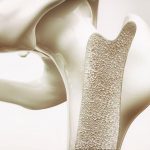
TUESDAY, Feb. 28, 2023 (HealthDay Now) — A long-established Alzheimer’s drug can help people with a disorder that causes them to compulsively pull at their hair or pick at their skin, a new clinical trial has concluded. Memantine considerably improved symptoms in 3 out of 5 patients with either trichotillomania (hair-pulling disorder) or excoriation (skin-picking) disorder, researchers reported in the American Journal of Psychiatry. “I think it was encouraging that it helped reduce the behavior of picking and pulling, compared to a placebo,” said lead researcher Dr. Jon Grant, a professor of psychiatry and behavioral neuroscience at the University of Chicago. “It gives me the idea that perhaps we’re onto the right underlying mechanism that might be happening here.” Hair-pulling and skin-picking disorders affect an estimated 3% to 4% of Americans, Grant said. Patients obsessively pull out strands of hair or pick at their skin, often doing themselves real physical harm. Memantine inhibits the activity of glutamate, one of the most abundant neurotransmitters in the brain. Overly high levels of glutamate in the brain can cause nerve cells to become overexcited, and this has been associated with conditions like Alzheimer’s disease, Parkinson’s disease, Lou Gehrig’s disease and multiple sclerosis, according to the Cleveland Clinic. Glutamate also has been linked to mental health problems like mood disorders and obsessive-compulsive disorder, the Cleveland Clinic says. The U.S.… read on > read on >



























-300x200.jpg)










